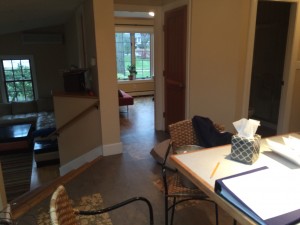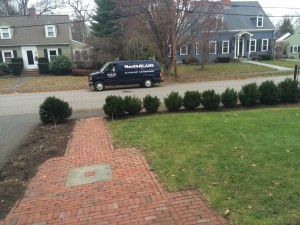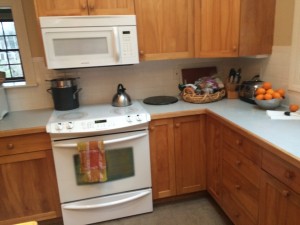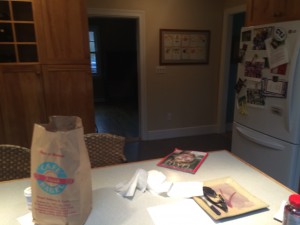Home is a place in which everything is familiar to oneself. This familiarity is applicable to all senses. From the sight of where all the furniture is placed, to the distinctive smell of the kitchen, to the taste of the water, everything is familiar, but the most important in this case is the sounds one hears when they are present in their house. The soundscape looked at in this case is my home in Massachusetts. The idea of sonic dominance was coined by the author Julian Henriques. Sonic dominance is when sound that is listened to transcends the power of the senses resulting in a divine like experience where one loses thought of their body and surroundings, and ultimately becomes connected with the sound. The “homey” feeling one feels when they are home is actually a result of the sonic dominance of the soundscape of the home.
In the soundscape of my house one hears many sounds, from birds chirping, to wind blowing, to the dishwasher working. These are all examples of keynote sounds, which are extremely important to achieving sonic dominance in the house. R. Murray Schafer created the idea of a keynote sound. These are the sounds that are in the background of a soundscape. They may not be noticed or heard, but are noticed when absent. Keynote sounds are key in making the home attain that “homey” feeling. Every home has different keynote sounds, but without them the home becomes unoriginal and is unable to capture those within it in its sonic dominance. The sonic dominance one feels is also like a keynote sound. One feels different when they are home or have that “homey” feeling. Nothing is able to alter one’s feelings and they feel separated from the rest of the world, yet it is not obvious and only is noticed once one is not present within their home. The keynote sounds like the birds chirping or the dishwasher washing are extremely important to the soundscape as they both give identity to the soundscape of my house, and allow for the subtle sonic dominance to take place.
Each of the sounds heard in the soundscape recording are vitally important in retaining the identity of the house. The signals (sounds one consciously hears and are in the foreground) also play an important role in identifying the soundscape. The signals of the soundscape are the parts of sound that carry the meaning. The dog barking, the people talking, and the truck door slamming can all be looked at as just loud sounds in the foreground. In actuality, they all carry meaning that allows one in the home to obtain the “homey” feeling or sense of sonic dominance. Each sound although not necessarily original in nature (in the sense of never hearing a sound like it), but is original in the context of the soundscape. My dog barking in the soundscape of my house allows me to think of memories of her, such as the day I first got her. If I did not hear the dog bark in the soundscape of my home, these memories or meanings may not be accessed as easily. This is an example of how in context these signals within the soundscape create meanings.
The combination of both the keynote sounds and the signals creates a “grain” that is only obtainable within the home. This “grain” causes the sonic dominance within the home to occur. The “grain” is an idea created by Barthes which is when music and the voice coexist creating a sound that cannot be described through the uses of adjectives. In this case it is not music and voice, but actually keynote sound and signal. The combination of both the subtleties of the keynote and the meanings of the signal create a perfect harmony in which the distinctive sounds of a home is created, and those who live in the home experience this “grain” as sonic dominance. The quote, “There is no place like home” embodies this idea because there is truly no other place like home where one can experience sonic dominance solely by standing in it.






